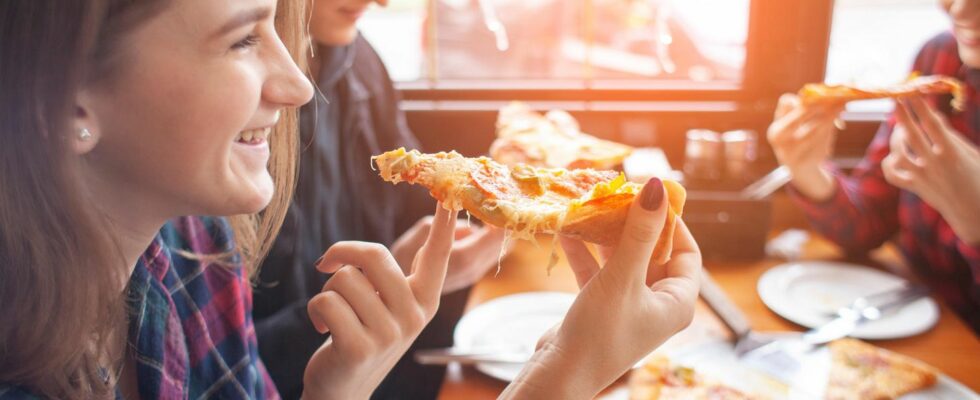The indulgence diet
Enjoy and still lose weight
© Богдан Маліцький / Adobe Stock
Most diets fail because you have to prohibit yourself from doing too much. The indulgence diet puts an end to this – you can find out how it works here.
The numbers speak for themselves: According to a current and representative Forsa survey commissioned by “Stern”, almost every second adult in Germany thinks they are too fat. The common thing: Once the excess kilos are there, it is very difficult to lose them again. SPIEGEL bestselling author Patrick Rosenthal also had this experience. So he met with the expert Prof. Dr. med. Bernd Kleine-Gunk teamed up and the indulgence diet developed with which Rosenthal was able to lose 25 kilos.
Does more enjoyment ensure long-term weight loss?
You probably know this too: You started a diet with motivation and followed it with discipline for some time – but at some point the sloppiness crept in again because you simply can’t completely do without sweets, pizza and the like. That’s exactly why enjoyment is so important! If you include enjoyable foods in moderation in your diet, you will not only stay motivated, but you will also learn to appreciate food again.
The indulgence diet: 3 golden rules
It must be said in advance: Even the indulgence diet can’t reinvent the wheel when it comes to losing weight – like Prof. Dr. med. kleine-Gunk confirms in the book: “Ultimately, losing weight is always a question of the so-called caloric balance. If I consume fewer calories than my body uses (that’s basal metabolic rate plus activity metabolic rate), then I’ll lose weight.” But: A healthy relationship with food can influence whether a diet attempt is successful.
Building on that The indulgence diet can be summarized with three golden rules:
1. See food as a pleasure
Anyone who has repeatedly tried unsuccessfully to lose weight often begins to see food as the enemy. But Enemies always mean stress for the body – the level of the so-called stress hormone cortisol increases. And that in turn increases your appetite and makes you fat in the long term. That’s why we shouldn’t demonize food, but rather learn to eat it again positive basic attitude to look at it and thus find your way back to enjoyment.
2. Use mock fasting as a weight loss aid
Prof. Dr. med. Kleine-Gunk recommends doing false fasting every now and then when on the indulgence diet. Is called: Three small, low-carbohydrate and low-protein meals are on the plan every day, which should, if possible, always be taken at the same time. Solid food means the regulated eating cycle remains intact, but the body still switches to fasting mode. In this he not only begins a cleaning process in the cells, he also uses annoying fat to generate energy – and the pounds melt away.
The expert recommends a five-day fasting period for healthy people. Before you start, it is still better to consult your family doctor first. For example, any health risks caused by previous illnesses can be ruled out.
3. Use the right recipes and ingredients
Rosenthal has developed a lot of recipes for the indulgence diet, which he divides into “always works” and “treating recipes”. His rule of thumb: If you have three meals, there should be two “always-goes” and one “treat yourself” recipe a day. Whether you want to eat the treat recipe in the morning, lunch or evening is up to you. Rosenthal sits down easy to prepare meals that are low in carbs and sugar yet delicious.
How it works? Through simple Ingredient swap: “The secret is to replace some ingredients with healthier alternatives without sacrificing taste or satisfaction,” Rosenthal says in the book. Any examples? For breakfast, Rosenthal recommends, among other things, almond crêpes with the sweetener erythritol instead of sugar as a “go-to” recipe. A “go-to” lunch recipe is a cheese pizza with Parma ham, where the dough is made from mozzarella, cream cheese and almond flour. In the evening there are zucchini noodles from the oven as a “go-to” recipe – i.e. zoodles as a healthy alternative to pasta.
Thanks to the varied “treating recipes” you don’t have the feeling that you have to go without everything during the diet – this is how the change in diet can be successful!

